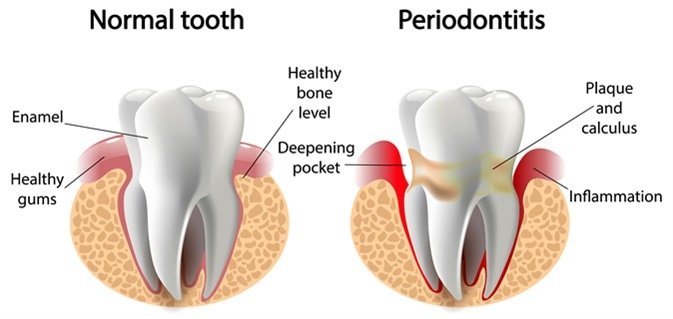Loose Molar in Adults: Causes, Symptoms, and How to Save Your Tooth

Key points
- Bone Loss (Osteoporosis): This condition weakens bones throughout the body, including the jawbone, making teeth more susceptible to loosening.
- Hormonal Changes: Fluctuations in hormones, particularly during pregnancy, can temporarily affect the ligaments and bones supporting the teeth, causing them to feel loose.
- Ill-fitting Dental Appliances: Poorly fitted braces or dentures can exert improper pressure on teeth, leading to mobility.
- Medication Side Effects: Some people taking GLP-1 drugs like Ozempic have reported dental side effects, dubbed "Ozempic teeth," which can include dry mouth and other issues that may contribute to tooth decay and looseness, as reported by Healthline.
- Cysts or Tumors: In rare cases, a growth in the jawbone can displace a tooth or destroy the bone around it. The New York Post notes that a persistent loose tooth can be a lesser-known sign of oral cancer.
Feeling that unnerving wiggle in a back tooth can be alarming. While a loose tooth is a rite of passage for a child, a loose molar in an adult is a clear warning sign from your body that something is wrong. It is not something that will fix itself and requires immediate attention from a dental professional.
Understanding the root cause is the first step toward saving your tooth and protecting your overall health. This comprehensive guide synthesizes expert advice and clinical data to explain why your molar might be loose, what you should do right now, and what treatments can restore your smile.
Why Your Adult Molar is Loose: Uncovering the Common Causes
A permanent molar is anchored securely in your jawbone by a network of ligaments and tissue. When it becomes loose, it means this support system has been compromised. The vast majority of cases can be traced back to a few key culprits.
Periodontal (Gum) Disease: The Primary Culprit
According to the Cleveland Clinic, the most common cause of loose adult teeth is periodontal disease. This is a serious gum infection that damages the soft tissue and, without treatment, can destroy the bone that supports your teeth.
It progresses in stages:
- Plaque Buildup: Bacteria-filled plaque hardens into tartar.
- Gingivitis: Gums become inflamed, red, and may bleed easily.
- Periodontitis: The gums pull away from the tooth, forming infected pockets. As the infection spreads below the gum line, it attacks the bone, causing irreversible bone loss and loosening the tooth.
 Image Source: Lotus Dental and Aesthetics Clinic
Image Source: Lotus Dental and Aesthetics Clinic
Physical Trauma or Injury
A direct blow to the face from an accident, a fall, or a sports injury can stretch or damage the periodontal ligaments that hold your tooth in place, causing it to become loose instantly.
Teeth Grinding and Clenching (Bruxism)
Many people grind their teeth, often unconsciously during sleep. This constant, excessive force can gradually weaken the periodontal ligaments and supporting bone over time, leading to tooth mobility.
Other Contributing Factors
While less common, other conditions can lead to a loose molar:
- Bone Loss (Osteoporosis): This condition weakens bones throughout the body, including the jawbone, making teeth more susceptible to loosening.
- Hormonal Changes: Fluctuations in hormones, particularly during pregnancy, can temporarily affect the ligaments and bones supporting the teeth, causing them to feel loose.
- Ill-fitting Dental Appliances: Poorly fitted braces or dentures can exert improper pressure on teeth, leading to mobility.
- Medication Side Effects: Some people taking GLP-1 drugs like Ozempic have reported dental side effects, dubbed "Ozempic teeth," which can include dry mouth and other issues that may contribute to tooth decay and looseness, as reported by Healthline.
- Cysts or Tumors: In rare cases, a growth in the jawbone can displace a tooth or destroy the bone around it. The New York Post notes that a persistent loose tooth can be a lesser-known sign of oral cancer.
Recognizing the Warning Signs: Symptoms of a Loose Molar
The wiggling sensation is the most obvious sign, but it's rarely the only one. Be aware of these accompanying symptoms, which can help your dentist diagnose the cause:
- Pain, soreness, or tenderness, especially when chewing
- Red, swollen, or bleeding gums
- Gum recession, which makes teeth appear longer
- Pus or signs of infection around the tooth and gums
- Persistent bad breath or a foul taste in your mouth
- A noticeable change in how your teeth fit together when you bite
What to Do Immediately for a Loose Molar (And What NOT to Do)
A loose adult molar is a dental emergency. The sooner you act, the better your chances of saving the tooth.
First-Aid Steps Before Your Dental Appointment
- Call Your Dentist Immediately: Schedule an emergency appointment. Time is critical.
- Avoid Wiggling It: Do not touch, push, or wiggle the tooth with your tongue or fingers. This can further damage the weakened ligaments.
- Switch to a Soft-Food Diet: Avoid chewing on the affected side of your mouth. Stick to soft foods like yogurt, soup, and smoothies to minimize pressure.
- Keep the Area Clean: Gently rinse your mouth with a warm salt-water solution (1/2 teaspoon of salt in a glass of warm water) two to three times a day. This helps reduce bacteria and soothe inflammation without being abrasive.
Critical Mistake to Avoid: Do Not Pull Your Own Tooth
While it might be tempting to resolve the issue yourself, you should never attempt to pull a loose adult tooth. As Colgate explains, unlike baby teeth, permanent teeth are not designed to fall out. Pulling it yourself can lead to excruciating pain, uncontrolled bleeding, severe damage to the surrounding gum and bone, and a high risk of infection.
Can a Loose Molar Be Saved? Understanding the Salvageability Spectrum
Whether a loose molar can be saved depends entirely on the underlying cause and the extent of the damage. A dentist will assess its mobility, which is often graded in stages.
The Stages of Tooth Mobility
- Initial Mobility: The tooth has very slight, subtle movement. At this stage, if the cause is treated promptly (e.g., a deep cleaning for early gum disease), the prognosis for saving the tooth is excellent.
- Moderate Mobility: The tooth's movement is more noticeable. This indicates more significant damage to the supporting structures, and intervention is urgently needed.
- Advanced Mobility: The tooth moves visibly and may be unstable even when speaking. This signifies extensive bone loss or damage, and the tooth is at high risk of being lost.
When a Molar is Likely Unsalvageable
A dentist will likely recommend extraction if they find:
- Extensive Bone Loss: Too much of the supporting jawbone has been destroyed by advanced periodontal disease.
- Severe Tooth Fracture: The tooth has a vertical root fracture, where the crack runs from the crown down through the root.
- Advanced, Untreatable Infection: The infection has caused too much damage to the tooth and surrounding bone.
Professional Treatments to Save Your Molar
Your dentist's treatment plan will be tailored to address the specific cause of the looseness.
Treating Gum Disease
- Scaling and Root Planing: This non-surgical deep cleaning is the first line of defense. It removes plaque and tartar from below the gumline and smooths the tooth roots to help the gums reattach.
- Surgery: For advanced cases, surgical options like flap surgery (to clean roots directly) or bone and gum grafts (to regenerate lost tissue) may be necessary, according to Medical News Today.
 Image Source: Dear Doctor
Image Source: Dear Doctor
Stabilizing the Tooth
- Dental Splinting: The loose molar can be temporarily bonded to adjacent, stable teeth with a composite resin splint. This holds it in place, allowing the ligaments to heal without stress from movement.
Addressing Bruxism
- Night Guards: A custom-fitted mouthguard worn during sleep protects teeth from the immense pressure of grinding.
- Bite Adjustment: In some cases, a dentist may need to reshape the biting surfaces of teeth to distribute pressure more evenly.
If the Tooth Cannot Be Saved: Extraction and Replacement
If the molar is deemed unsalvageable, your dentist will recommend extraction followed by a replacement option to prevent bone loss and shifting of other teeth. These include:
- Dental Implants: A titanium post that acts as an artificial root, providing a strong, permanent foundation for a crown.
- Dental Bridges: A prosthetic tooth anchored by crowns placed on the adjacent teeth.
- Partial Dentures: A removable appliance that fills the gap.
The Broader Picture: How a Loose Molar Connects to Your Overall Health
A loose molar is more than a dental issue; it's a window into your systemic health. The chronic inflammation from periodontal disease—the number one cause of loose teeth—is linked to a host of serious health conditions.
The bacteria and inflammation from your gums can enter your bloodstream and contribute to:
- Cardiovascular Disease: Increased risk of heart attack and stroke.
- Diabetes: Gum disease can make it harder to control blood sugar levels.
- Respiratory Infections: Bacteria can be inhaled into the lungs, causing pneumonia.
- Cognitive Decline: Emerging research links poor oral health to an increased risk of conditions like Alzheimer's.
- Cancer: Studies have shown a correlation between tooth loss from gum disease and an increased risk of certain cancers, including esophageal and lung cancer.
Taking care of a loose tooth is not just about saving your smile—it's about protecting your long-term health.
References
- Cleveland Clinic. (2024). Loose Tooth: Causes & What To Do. https://my.clevelandclinic.org/health/diseases/loose-tooth
- Medical News Today. (2018). Loose tooth: Treatments, causes, and prevention. https://www.medicalnewstoday.com/articles/322028
- Colgate. Pulling A Tooth At Home: When It's OK And When It's Not. https://www.colgate.com/en-us/oral-health/tooth-removal/pulling-a-tooth-at-home-when-its-ok-and-when-its-not
- Healthline. (2025). ‘Ozempic Teeth’: GLP-1 Drugs May Cause Tooth Decay, Experts Say. https://www.healthline.com/health-news/ozempic-teeth-may-impact-dental-health
- New York Post. (2025). A loose tooth can be sign of mouth cancer — 4 others revealed. https://nypost.com/2025/02/12/health/a-loose-tooth-can-be-sign-of-mouth-cancer-4-others-revealed/

About the author
Benjamin Carter, MD, is a board-certified otolaryngologist specializing in head and neck surgery, with an expertise in treating throat cancer. He is an associate professor and the residency program director at a medical school in North Carolina.